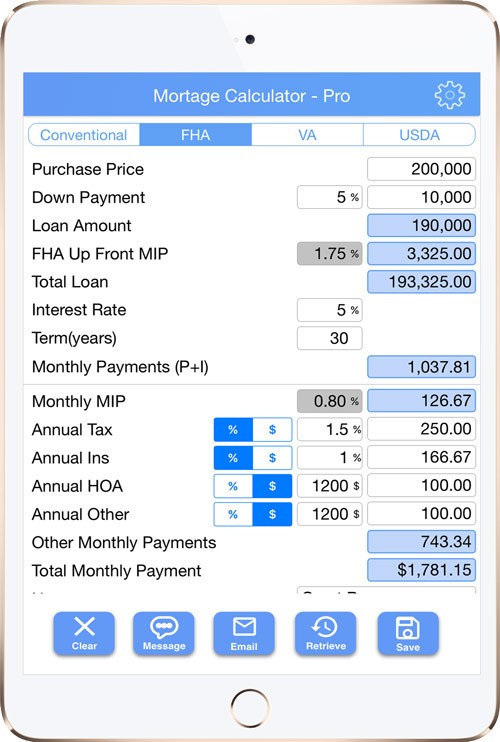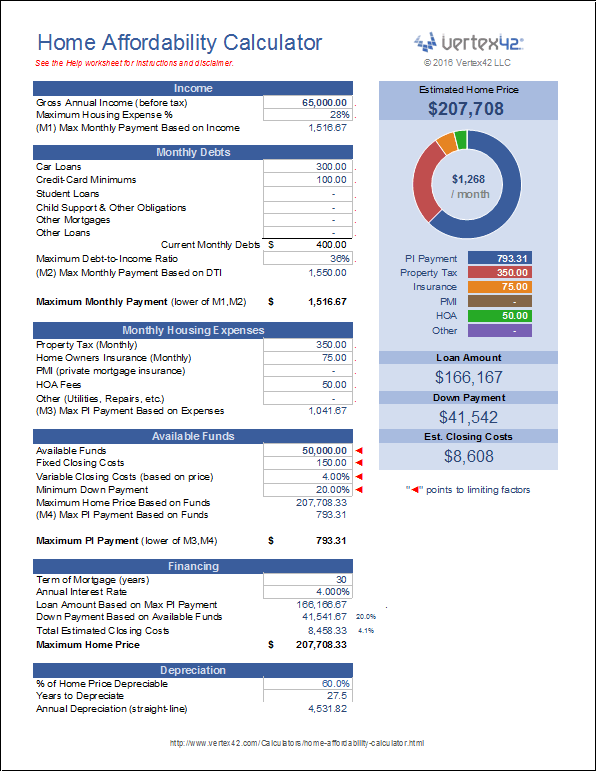Table Of Content

Mortgage pre-approval is a statement from a lender who’s thoroughly reviewed your finances and decided to offer you a home loan up to a certain amount. Pre-approval is a smart step to take before making an offer on a home, because it will give you a clear idea of how much money you can borrow to pay for a house. Pre-approval is also a great way for you to stand out from other buyers in a competitive marketplace, since it proves to sellers that you can follow through on your offer and close the deal.
Mortgage Preapprovals Vs. Prequalifications: Which Should You Get?
Private mortgage insurance (PMI) is an insurance policy required by lenders to secure a loan that’s considered high risk. You’re required to pay PMI if you don’t have a 20% down payment and you don’t qualify for a VA loan. The reason most lenders require a 20% down payment is due to equity. If you don’t have high enough equity in the home, you’re considered a possible default liability.

Terms explained
This means your entire monthly mortgage payment, including taxes and insurance, shouldn't exceed 28% of your pre-tax monthly income. This is generally shown as an annual percentage of the outstanding loan. For example, a 5% interest rate on a $200,000 mortgage balance would add $833 to the monthly payment. As the balance is paid down through monthly payments, the interest portion of your payment is reduced.
What is a loan term?
One of the basic principles of the American workplace is that a hard day’s work deserves a fair day’s pay. A cornerstone of that promise is the Fair Labor Standards Act’s (FLSA) requirement that when most workers work more than 40 hours in a week, they get paid more. The Department of Labor’s new overtime regulation is restoring and extending this promise for millions more lower-paid salaried workers in the U.S. Bank deposit accounts, such as checking and savings, may be subject to approval. Deposit products and related services are offered by JPMorgan Chase Bank, N.A. Member FDIC.
Amortizing a Mortgage Faster and Saving Money
The mortgage payment estimate you’ll get from this calculator includes principal and interest. If you choose, we’ll also show you estimated property taxes and homeowners insurance costs as part of your monthly payment. Typically, a fixed percentage based on the appraised value of your home that you pay to the county, the school district and the municipality where your property is located. The taxes may be assessed annually or semiannually, and you may pay them as part of your monthly mortgage payments. Depending on when you close your loan, some of this property tax may be due at the time of closing.
Mortgage Calculator: PMI, Interest & Taxes - The Motley Fool
Mortgage Calculator: PMI, Interest & Taxes.
Posted: Thu, 09 Nov 2023 08:00:00 GMT [source]
A mortgage is a loan secured by property, usually real estate property. Lenders define it as the money borrowed to pay for real estate. In essence, the lender helps the buyer pay the seller of a house, and the buyer agrees to repay the money borrowed over a period of time, usually 15 or 30 years in the U.S. A portion of the monthly payment is called the principal, which is the original amount borrowed. The other portion is the interest, which is the cost paid to the lender for using the money.
The process of spreading your interest and principal payments over time is called amortization. When your loan is fully amortized, your loan balance reaches $0. This typically happens at the end of your term unless you make extra payments. One common exemption includes, VA loans, which don’t require down payments, and FHA loans often allow as low as a 3% down payment (but do come with a version of mortgage insurance). In addition to there being multiple mortgage terms, there are several common types of mortgages. Along with calculating how much you expect to pay in maintenance and other house-related expenses each month, you should also consider your other financial goals.
These articles are for educational purposes only and provide general mortgage information. Products, services, processes and lending criteria described in these articles may differ from those available through JPMorgan Chase Bank N.A. The views expressed in this article do not reflect the official policy or position of (or endorsement by) JPMorgan Chase & Co. or its affiliates.
If your down payment equals less than 20% of the home price, you may have to pay private mortgage insurance (PMI). Taxes you have to pay based on the government’s appraisal of your property. These are usually included as part of your monthly mortgage payment. Property taxes vary greatly depending on location and home price. A 15-year mortgage will have a higher monthly payment but a lower interest rate than a 30-year mortgage. Because you pay more toward the principal amount each month, you’ll build equity in your home faster, be out of debt sooner, and save thousands of dollars in interest payments.

Typically the first fixed period offers a low rate, making it beneficial if you plan to refinance or move before the first rate adjustment. Adjust the graph below to see historical mortgage rates tailored to your loan program, credit score, down payment and location. Check out the Chase Auto Education Center to get car guidance from a trusted source. When you're getting ready to buy or refinance a home, it's important to make a smart financial move. With a host of different mortgage calculators at your fingertips, you can quickly assess your loan options and your monthly costs so you can make an informed decision. Over time, the balance of the loan falls as the principal repayment gradually increases.
PMI is calculated as a percentage of your original loan amount and can range from 0.3% to 1.5% depending on your down payment and credit score. Once you reach at least 20% equity, you can request to stop paying PMI. For the mortgage rate box, you can see what you’d qualify for with our mortgage rates comparison tool. Or, you can use the interest rate a potential lender gave you when you went through the pre-approval process or spoke with a mortgage broker. There are several factors that determine your interest rate, including your loan type, loan amount, down payment amount and credit history. Short-term mortgages offer less protection against changing interest rates because you need to renew them more frequently.
A 20% down payment also allows you to avoid paying private mortgage insurance on your loan. You can use Zillow's down payment assistance page and questionnaire tool to surface assistance funds and programs you may qualify for. If you're curious about how much you could reasonably afford, use an affordability calculator.
A longer term will have a lower monthly payment because you’ll pay off the loan over a longer period of time. An extra payment is when you make a payment in addition to your regular monthly mortgage payment. The mortgage calculator lets you click "Compare common loan types" to view a comparison of different loan terms. Click "Amortization" to see how the principal balance, principal paid (equity) and total interest paid change year by year. These loans have interest rates that reset at specific intervals. They typically begin with lower interest rates than fixed-rate loans, sometimes called teaser rates.

No comments:
Post a Comment